This post may contain affiliate links. Please read my privacy policy.
Beef rendang is a spicy, rich, and creamy Indonesian/Malaysian beef stew made with beef, spices, and coconut milk. This is the best and most authentic beef rendang recipe you will find online!
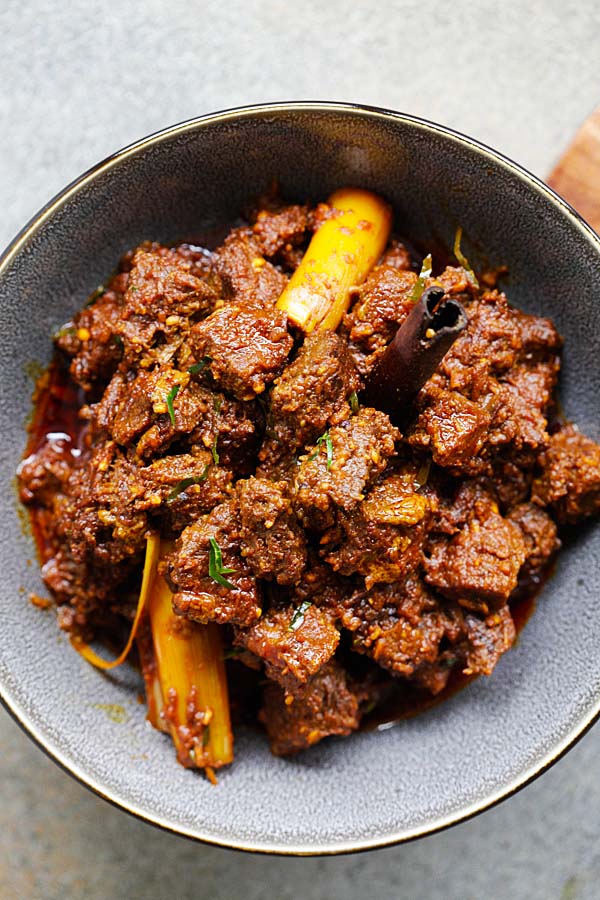
Table of Contents
- Authentic Beef Rendang Recipe
- Origins Of Rendang
- Beef Rendang Ingredients
- Secret Ingredient Of Rendang Paste
- Recipe Variations
- How To Make Beef Rendang
- Make The Best and Most Authentic Rendang
- Frequently Asked Questions
- What To Serve With Rendang
- Other Malaysian Recipes You Might Like
- Beef Rendang (The Best!) Recipe
Authentic Beef Rendang Recipe
Rendang is one of my all-time favorite dishes. This rich and tender coconut beef stew is famous for its intense, complex flavors. Known as rendang daging in Indonesia and Malaysia, it’s arguably the most iconic beef recipe in both countries, and even in Singapore to some extent.
Fun fact: it’s also ranked as the #1 dish on CNN’s World’s 50 Best Foods list! Over the years, as more chefs attempt to recreate beef rendang, the dish has sparked its fair share of debates over the “right” recipe and cooking techniques.
One of the most famous controversies happened in 2018, when a MasterChef UK judge criticized a Malaysian-born contestant’s rendang for not being crispy. The comment caused a massive uproar on social media, with many Asians pointing out that rendang isn’t meant to be crispy. It’s a rich, tender stew, not a fried dish!
Traditionally, the protein in rendang is never deep-fried. Instead, it’s simmered and stewed for hours with aromatic spices and coconut milk until the meat becomes meltingly tender and deeply flavorful.
If you’ve never tried it, I highly recommend making this Malaysian beef rendang. Don’t forget to check out my step-by-step video to guide you through every step of the process—it’s easier than you think! You’ll love having bowls of spicy, creamy, and tender beef stew to savor for days. This is the most authentic beef rendang recipe online, with over 700 glowing reviews and an average rating of 4.6!
“I never send in reviews for anything. But I felt moved to do it for the first time ever. This recipe is so delicious. I’ve spent a lot of time in Malaysia and this definitely brings back happy memories.”
– Arun
Origins Of Rendang
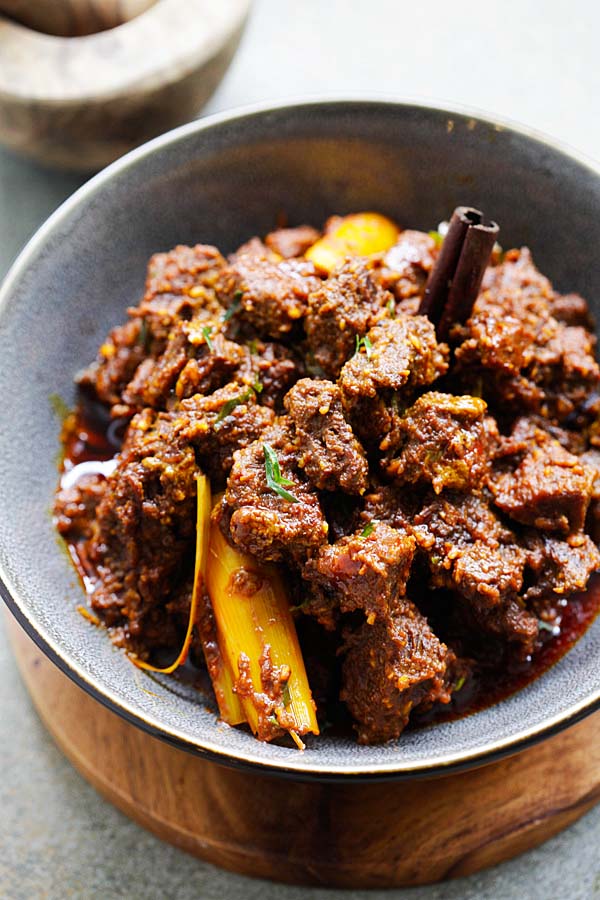
Beef rendang originates from Indonesia and is a beloved dish of the Minangkabau ethnic group. This rich and flavorful stew is more than just a meal—it’s a cultural treasure, often served at ceremonial occasions to honor guests and mark special celebrations.
I believe rendang made its way to Malaysia when the Minangkabau settlers from Sumatra migrated to the southern Malay Peninsula during the Melaka Sultanate era. Malaysians, especially the Malay community, adore rendang just as much, and it’s now a staple in their cuisine.
Beef Rendang Ingredients
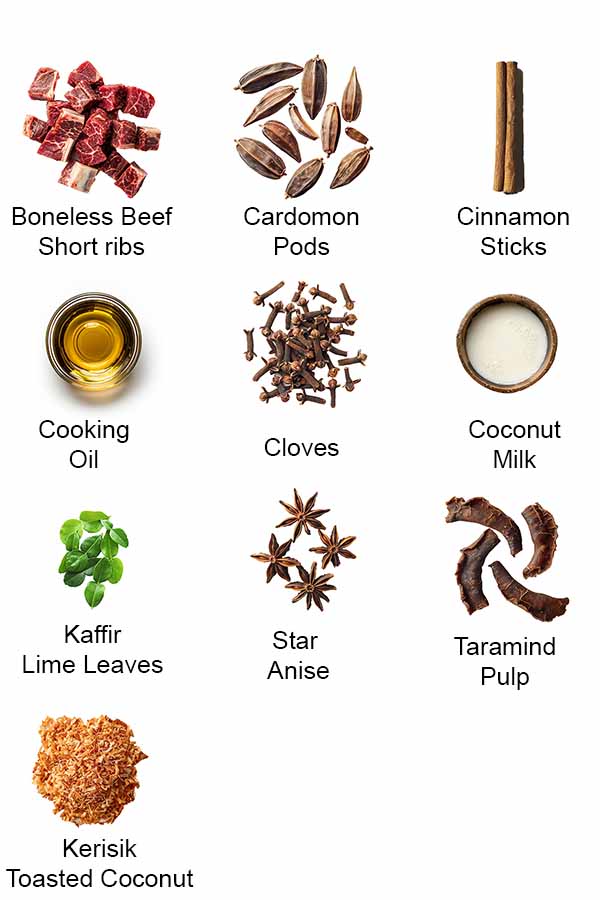
Main Ingredients
The core of beef rendang is the spice paste, as well as the various aromatic spices: cinnamon, cardamom pods, cloves, and star anise). Here are some of the main ingredients, including what you will need for the spice paste:
- Boneless beef short ribs – this is the best cut of beef for this recipe. Make sure to cut the beef into cubes. Make sure you don’t cut it too small as the meat might break apart after cooking.
- Coconut milk – if you like a creamier and richer taste, opt for coconut cream, which is thicker in consistency compared to coconut milk.
- Kaffir lime leaves – impart the iconic flora aroma and perfume the dish with citrusy fragrance. I recommend buying fresh leaves to get more of that citrusy flavor. They freeze really well, so you can buy a bunch and keep them in the freezer to use in Tom Yum Soup, Sambal Udang, and Beef Penang Curry.
- Spices – I use fresh cinnamon, cloves, star anise, and cardamom, but you can also use the powdered version.
- Tamarind juice – the tart tamarind balances out the richness of the coconut milk. I use tamarind pulp soaked in warm water, but you can also use tamarind puree.
- Kerisik – toasted grated coconut gives the dish a nutty and earthy flavor.
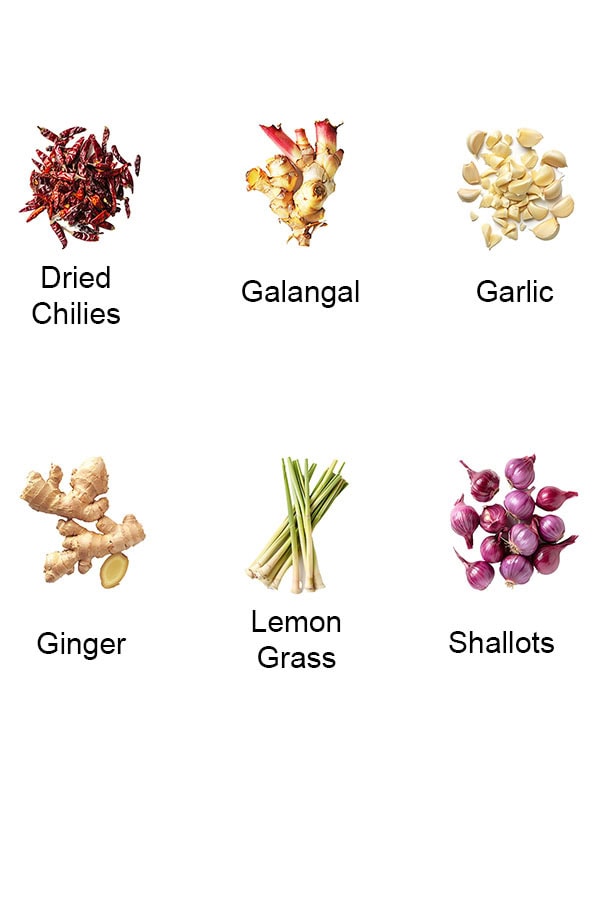
Rendang Spice Paste Ingredients
- Dried chilies – add as much or as little as you like depending on preference. You can use half the amount in this recipe for a milder stew.
- Galangal – if you cannot find galangal, skip it altogether. It tastes like ginger but it is more sour and peppery.
- Lemongrass – use only the white part, slice thinly. Smash them a little bit using the back of your knife to infuse more flavor into the dish.
- Shallots
- Garlic
- Ginger
See the recipe card for full information on ingredients.
Secret Ingredient Of Rendang Paste
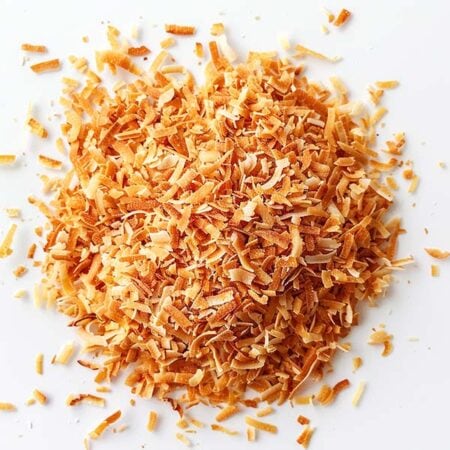
To make the best beef rendang, you need to have the secret ingredient kerisik or toasted coconut. Many traditional Indonesian and Malaysian recipes call for kerisik. This golden-toasted shredded coconut adds immense aromas, earthy nuance, and vibrant textures to the finished dish.
Expert Tip #1: My late grandmother taught me the technique of pounding the kerisik using a traditional stone mortar and pestle. This process breaks down the fiber in the toasted shredded coconut and releases the fat contents in the toasted coconut. When adding pounded kerisik to the list of ingredients, you will have the richest, creamiest, and “lemak” (meaning “fat” in Indonesian-Malaysian language) rendang ever!
Expert Tip #2: Another technique is to slow-cook the meat on low heat, preferably over a charcoal fire, in a clay pot, and cover it with its lid. In the modern-day kitchen, you can just use a pan or pot to slowly stew and simmer the beef and reduce the liquid during the cooking process. You’ll get the most tender and melt-in-your-mouth soft meat ever!
Recipe Variations
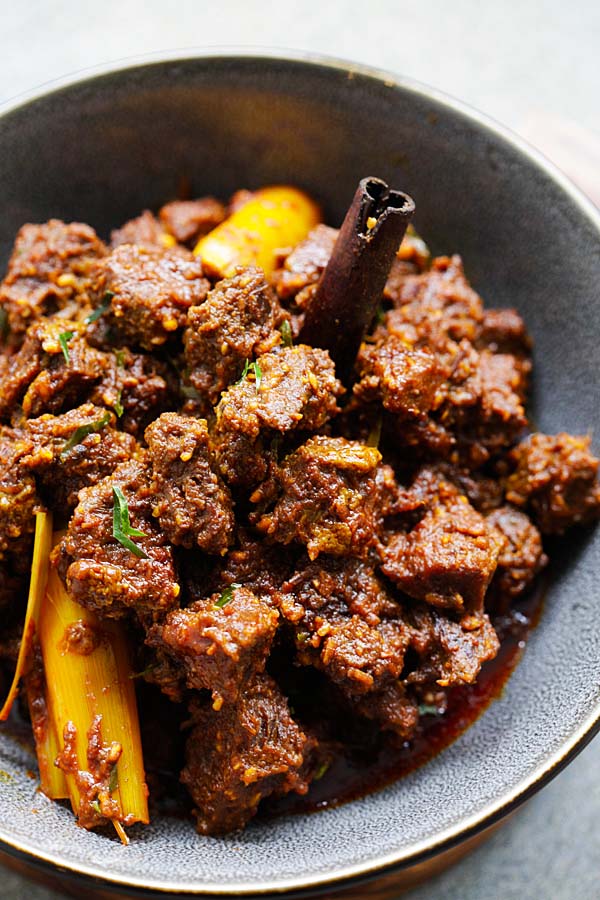
While beef rendang is the poster child, there are other variations such as chicken rendang and lamb rendang that are equally delicious. Chicken rendang is often used as a filling in baked buns, and it is an all-time favorite of locals.
For vegans and vegetarians, you can certainly use fried tofu or tempeh. For seafood lovers, rendang prawn (shrimp) is a good option.
Regardless of which protein you use, slow-cooked beef rendang is absolutely delicious and best with steamed rice like nasi lemak.
How To Make Beef Rendang
Beef rendang, or any beef stew, is a labor of love, as it requires patience and time to achieve the perfect balance of flavors. Here’s how to make rendang the traditional way:
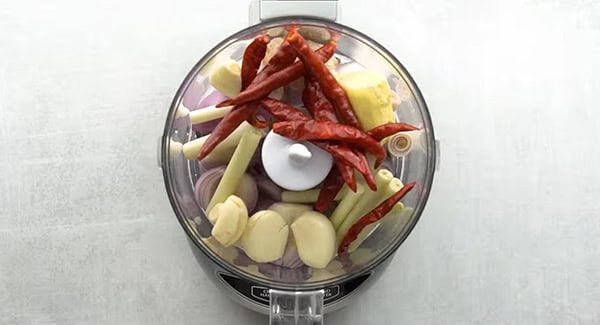
First, chop up the spice paste ingredients, then blend them in a food processor until they’re nice and fine.
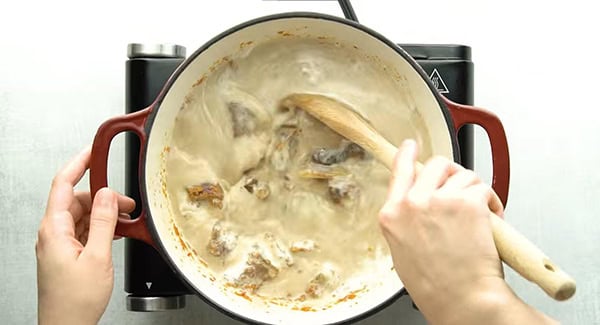
Heat some oil in a stew pot, then toss in your spice paste, cinnamon, cloves, star anise, and cardamom. Stir-fry them until everything is really fragrant. Add the beef and the pounded lemongrass, then stir it all together for about a minute.
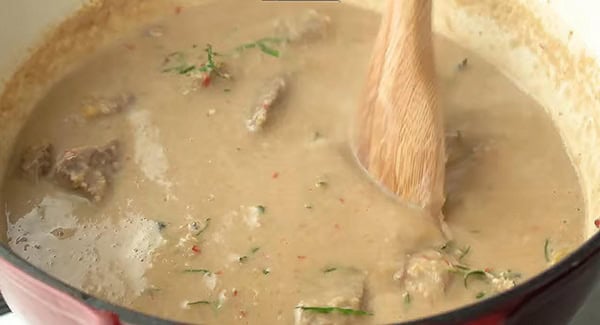
Next, pour in the coconut milk, tamarind juice, and water. Let it simmer on medium heat, stirring frequently, until the meat is almost cooked. Now, throw in the kaffir lime leaves, kerisik (toasted coconut), sugar, or palm sugar. Stir it all together until it’s well blended with the meat.
Pro tip: To make the kerisik, just toss some grated coconut into a dry wok and stir it continuously until it turns golden brown. It’s super easy, but you’ve got to keep an eye on it so it doesn’t burn!
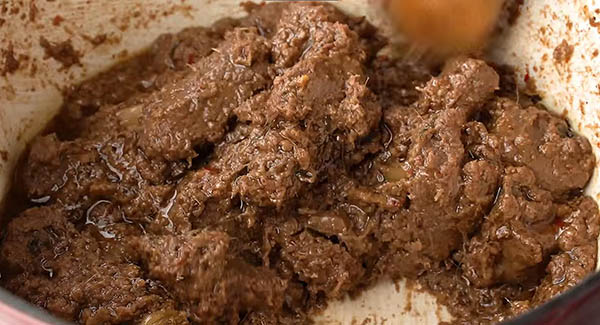
Reduce the heat to low, cover the pot with a lid, and let it simmer for 1 to 1 1/2 hours, or until the meat is super tender and the gravy has thickened up nicely. Taste and adjust with more salt or sugar if needed.
Serve it hot with steamed rice, and save any leftovers for later—this dish gets even better the next day!
Make The Best and Most Authentic Rendang
The best and most authentic meat rendang should be somewhat dry (as pictured here). Please take note that this is not a curry, and the dish should never be watery like this Panang Curry. The meat should be generously coated with the rendang paste.
I suggest you make a big serving (you may double or triple this recipe), so you have some leftovers. The flavors and aroma become more intense the next day that some prefer to wait and eat it on the second day. In fact, the Minangkabau saves the dish for months as the complex taste and flavor develop over time.
Frequently Asked Questions
I use boneless beef short ribs or stew beef. These cuts have a good meat-to-fat ratio that makes rendang so tender and flavorful. Cut the beef into smaller chunks to ensure that each chunk is tender and nicely coated with the aromatic rendang curry paste.
Rendang is a dry meat stew with a thick, flavorful gravy that is cooked until the meat is tender and infused with flavors and almost all of the liquid has evaporated.
No, rendang and curry are two different dishes. Rendang is a type of dry, slow-cooked meat dish while curry like this beef curry with pumpkin is a wet or semi-wet stew. The spices and ingredients used in the dishes are also different with rendang having unique flavors from coconut milk, kerisik (toasted coconut), kaffir lime leaves, and galangal.
This beef rendang recipe has 795 calories per serving.
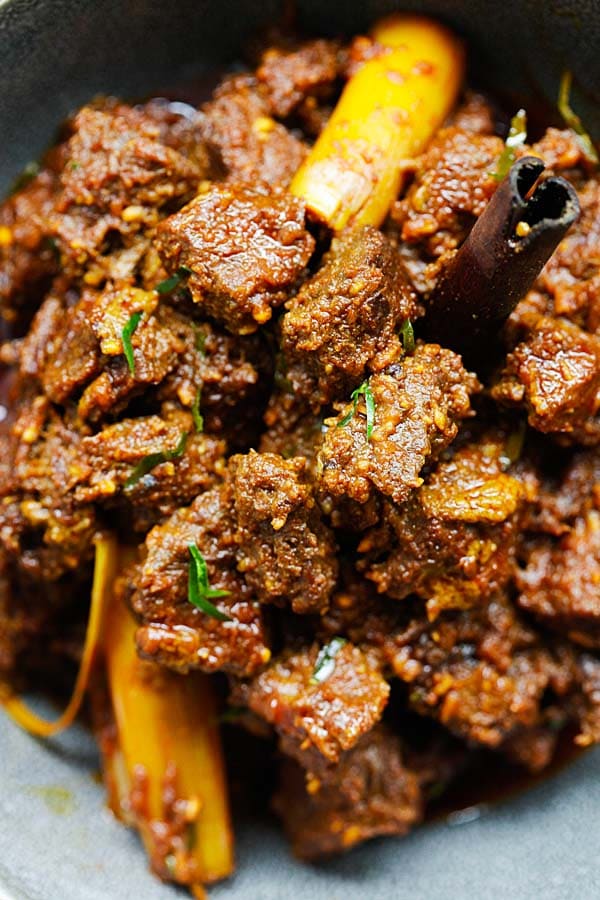
What To Serve With Rendang
Serve this Malaysian beef rendang with rice, noodles, or bread. For an easy and traditional Malaysian weeknight dinner, I recommend the following recipes:
I hope you enjoy this post as much as I do. If you try my recipe, please leave a comment and consider giving it a 5-star rating. For more easy and delicious recipes, explore my Recipe Index, and stay updated by subscribing to my newsletter and following me on Facebook, Pinterest, and Instagram for new updates.
Other Malaysian Recipes You Might Like

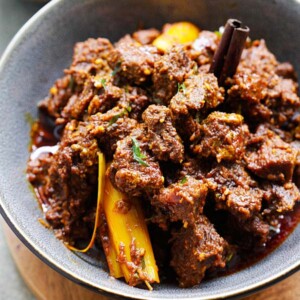
Beef Rendang (The Best!)
Ingredients
- 1 1/2 lbs. boneless beef short ribs, cut into cubes
- 5 tablespoons cooking oil
- 1 stick cinnamon, about 2-inch length
- 3 cloves
- 3 star anise
- 3 cardamom pods
- 1 lemongrass, cut into 4-inch length and pounded
- 1 cup thick coconut milk , coconut cream
- 1 cup water
- 2 teaspoons tamarind pulp, soaked in some warm water for the juice and discard the seeds
- 6 kaffir lime leaves, very finely sliced
- 6 tablespoons kerisik , toasted coconut
- 1 tablespoon sugar , or palm sugar to taste
- salt , to taste
Spice Paste:
- 5 shallots
- 1 inch galangal
- 3 lemongrass , white part only
- 5 cloves garlic
- 1 inch ginger
- 10-12 dried chilies, soaked in warm water and seeded
Instructions
- Chop the spice paste ingredients and then blend in a food processor until fine.
- Heat the oil in a stew pot, add the spice paste, cinnamon, cloves, star anise, and cardamom and stir-fry until aromatic. Add the beef and the pounded lemongrass and stir for 1 minute. Add the coconut milk, tamarind juice, water, and simmer on medium heat, stirring frequently until the meat is almost cooked.
- Add the kaffir lime leaves, kerisik (toasted coconut), sugar, or palm sugar, stirring to blend well with the meat.
- Lower the heat to low, cover the lid, and simmer for 1 to 1 1/2 hours or until the meat is really tender and the gravy has dried up. Add more salt and sugar to taste. Serve immediately with steamed rice and save some for storage.
Video
Notes
- I recommend buying fresh kaffir lime leaves to get more of that citrusy flavor. They freeze really well, so you can buy a bunch and keep them in the freezer for later.
- To prepare the kerisik or toasted coconut, just add the grated coconut to a dry wok and stir continuously until it turns golden brown.
- Pound the kerisik using a traditional stone mortar and pestle to break down the fiber in the coconut and release its fat content in the dish.
- Slow-cook the meat on low heat, preferably over a charcoal fire, in a clay pot, and cover it with its lid.
- I suggest you make a big serving (you may double or triple this recipe), so you have some leftovers.
- Watch the cooking video for a step-by-step guide.
Nutrition
Nutrition information is automatically calculated, so should only be used as an approximation.
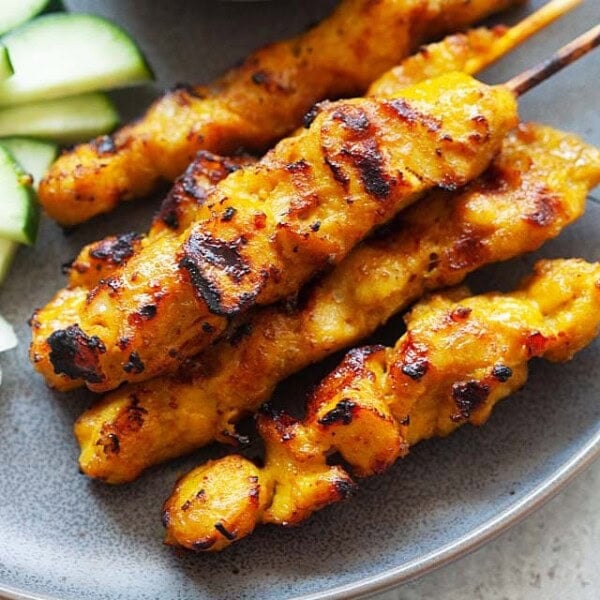
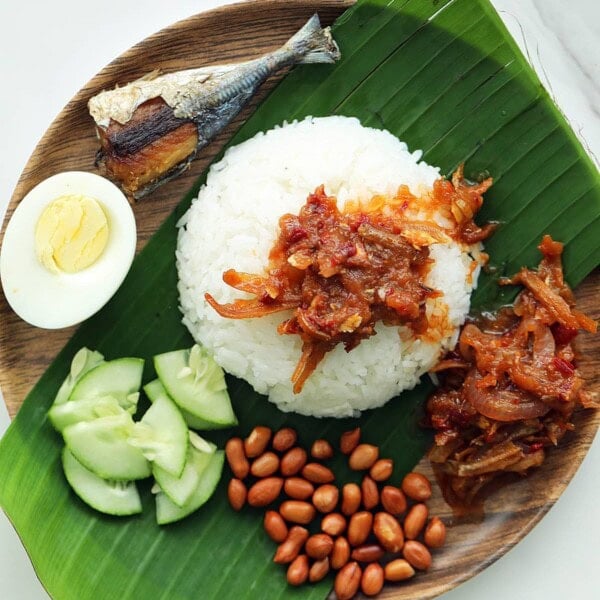
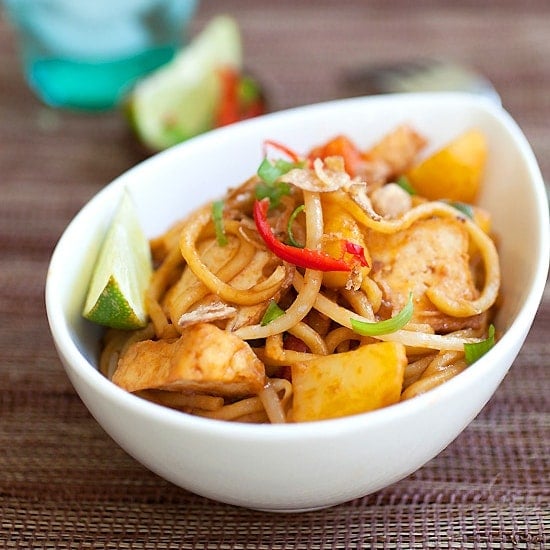






I’ve made this recipe a couple of times and it turned out excellent every single time! I did cook it for longer than prescribed and with bone-in-meat goat pieces.
We have been making this recipe to the letter and it came out absolutely delicious every time we cooked it. You just have to let the lid off if it’s still too much liquid and it will thicken just like the photo.
This is the only recipe we will follow when making rendang so thank you Rasa Malaysia for sharing the recipe.
Thanks for your support.
The other user’s comment was absolutely correct. The recipe resulted in approximately 3 cups of liquid, similar to Pho soup.
Thanks.
Followed the recipe to the letter and it doesn’t look anything like the photos. Too much liquid abs the meat is tough. Find another recipe people
Spent years in SEAsia, and Beef Rendang is by far the best dish I was able to eat. I have tried to replicate it and found my skills are not up to the task. It takes a skilled Malay cook to make it perfect. Fortunately, my Amah was such. I have not been able to find this since I left there, and I am eager to taste it again. Heaven is based on this recipe.
Did you cook it with lid off for an hour before adding the kerisik? Lid goes on then and left to cook for another couple of hours. Mine comes out just like the picture and it is absolutely delicious with rice and stir fried turmeric greens. Plain yogurt and spring onion pancakes on the side. Happy days :)
If you cook it only 1/2 an hour longer, slow, with lid on, the meat will be so tender, juice absorbs and brown colour appears.
That’s the sweet spot when it turns into Rendang
I’d like to make this for 8 people. Do I just double the recipe?
Yes.
Umm you do realize different stove tops and simmers will be different? Also not every cut of meat will get tender at the exact same time? Its cooking obviously you’re gonna have to adjust as needed. If it isn’t reducing in time turn up heat slightly and or remove lid earlier…
The recipe is totally fine but I personally do add some candlenuts
The first portion of the cook is with the lid off on the stovetop. This reduces the liquid and intensifies the flavour. Don’t put a lid on the pot until you have added the coconut.
Hi Bee, may I know if this recipe works in an Instant Pot? And if so, how long should I cook it for? Thank you.
Yes, it should be. I think 20 mins will be great.
You could say this beef rendang is THE BEST!! BUT IT IS FAR FROM THE BEST, AS I AM A NATIVE INDONESIAN WHO KNOWS EXACTLY WHAT IS THE BEST. THE INGREDIANTS YOU USED WERE NOT THE AUTHENTIC ONE WHO MY PEOPLE USED IT.
So, do you have a recipe to share?
So what is ‘the best’? or are you just going to sit there and ***** about it?
Did your version include fish sauce?
Probably not. The Instant Pot will prevent any evaporation.
Does the gravy really thicken with the lid on? I want to try this recipe, but the part where you cover a pot with mostly liquid and it comes out without excess liquid a couple of hours later despite being covered the whole time makes me nervous…
Hi Aaron,
It does for me. I cook it for around an hour down low with the lid off. Then add the coconut and cook for another hour or so with the lid on and it comes out thick and sticky with no separated liquid. When I put the lid on I finish it in a low oven rather than on the stove top to prevent sticking.
It doesnt really say that you have to cook with an hour without lid… I agree that if you follow this recipe to the letter it’s too much liquid. Need to take the lid off at some point indeed.
Gravy thickens with lid off; allowing the excess liquid to evaporate.
Hi there,
Thank you so much for the post you do and also I like your post, Are you looking for buy ½ Dozen Fresh Egg Bundle , 6 Dozen Egg Pack for Home Delivery , beef carcasses, Beef Cuts Eyeround ,Beef Cuts Knuckle ,Frozen Beef Flanks, FROZEN MEAT, Frozen Pork Collar, Frozen Pork Shoulder, PASTURE-RAISED EGGS 12CT LARGE ,Pig Ear, buy Beef Carcasses online, buy Beef Cuts Knuckle online, buy Beef Cuts Rump online, buy Beef Cuts Shoulder online, buy Beef Cuts Tenderloloin online, buy Beef Cuts Topside online, buy Beef Heart online, buy Pig Tail online, buy Pork Hind Feet online, buy Frozen Pork Backbones online, buy Frozen Pork Back Skin online, buy Frozen Pork Feet online, buy Frozen Pork Leg Boneless online, with the well price and our services are very fast. Click here for
Email: info@bestbrazilchickenonline.com
Looking forward to trying this recipe. Can you tell me the amount of water (1/2 cup?) needed to soak the tamarind pulp? Do I just use the thick creamy part of the coconut milk (and not the liquid part)?
1/3 cup is fine. Yes, creamy part will be great.
this is wonderful. Add a cut up lime if you don’t have tamarind
If I can’t find boneless short rib can I use the one with the bones in? If so how much should I use for the recipe?
Yes you can.
i love all your recipes, i would expect one would try it as intended and leave or add whatever they want in the next batch. it’s like any recipe, too sweet, too salty…blah
I’m finding the taste quite boring. It needs more flab o r. This is lacking. Certainly not the best beef rendang! Disappointed!